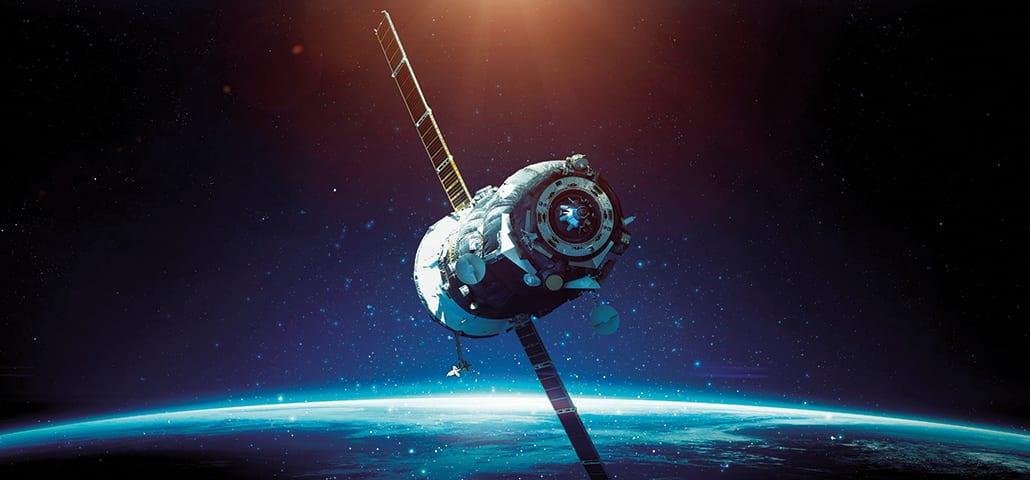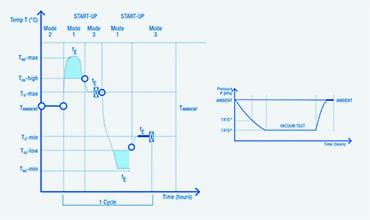
What is a thermal vacuum chamber and how does it work?
Basic information on the tests carried out by our Thermal Vacuum, Chambers (TVC), which accurately reproduce the environmental conditions in which objects operate in space.
What is a Thermal Vacuum Chamber (TVC)
The ACS thermal vacuum chambers produced by Angelantoni Test Technologies are equipment mainly used to simulate environmental space conditions.
The most common applications of a Thermal Vacuum Chamber (TVC) are related to the tests of satellite performance, control of the thermal cycle and testing of components, subsystems, and complete satellites in a fully controlled environment. The tests are able to accurately reproduce the conditions of the space through the simultaneous control of two environmental parameters: Pressure and Temperature.
The importance of satellite testing
Vacuum conditions simulate the unique context in which a thermal exchange is possible in the environment space: by irradiation and conduction.
It is essential to carry out tests before the launch to allow the satellites to be tested in all those conditions that could compromise their performance. If the satellite's behavior in space is not examined in advance, the most frequent risk is the freezing or overheating of the satellite's components themselves.
Furthermore, it is good to keep in mind that satellites are subject to pressures below 10-6 mbar.
Component damages in space are caused, for the most part, by solar radiation not filtered by atmosphere (AM0 - Air Mass 0). Depending on the orbit that the satellites will have to travel, the thermal exchange rate can be more or less high. Some satellites run around 90-minute orbit at temperatures around + 150 °C when exposed to sunlight and temperatures around - 190 °C when in eclipses.
Thermal analysis are conducted on the design using thermal models, which are then verified and tested. ACS has developed a wide range of TVC thanks to its wide experience in several techniques applied in the environmental testing simulation.
Thermal systems
Thermal cycling: used to subject the DUT (Device Under Test) to the alternation of high and low temperatures within a temperature range that is typically - 100 °C to + 100 °C, while the pressure is maintained at values below 10-6 mbar (high vacuum). While the satellite is subjected to thermal cycling, it is possible for RF (radiofrequency) signals to be exchanged across the chamber through dedicated wave guides. These tests may take up to a month.
Thermal balance: made for the validation of the thermal-mathematical model of the satellite. Tests are performed by creating an environment with a temperature range similar to that which the satellite will encounter in orbit (below -180°C). Some parts of the satellite are also subjected to heating from hot sources (lamps or IR emitters) to simulate the effect of sun rays which can cause temperatures to locally reach +150°C. The satellite is kept at a constant pressure of 10-6 mbar during these tests.
A wide range of thermal systems is available based on different test needs, economy and flexibility, such as:
- Liquid nitrogen flooding (boiling mode)
- Liquid nitrogen flooding (boiling mode) with heating elements (lamps or IR emitters)
- Liquid nitrogen partial flooding (boiling mode) with heating elements (lamps or IR emitters)
- Liquid nitrogen pressurized circuit with heating elements (lamps or IR emitters)
- Pressurized gaseous nitrogen circuit
- Combined liquid and gaseous nitrogen modes
- Mechanical cooling with intermediate fluid



How does a Thermal Vacuum Chamber work?
1. The external body
The external body of the testing volume (vessel) is produced from high-quality stainless steel and its design is supported by the FEM (Finite Element Method) analysis in order to optimise the steel thickness withstanding the pressure differences between the internal and external environments. Welding and surface finishing are treated to minimise leak rates and outgassing, making it possible to reach deep vacuum.
2. The thermal field
The test volume of the TVC is a thermoregulated stainless steel cylinder, known as the shroud, which transfers the heat to the DUT by its inner surface irradiation. Two disc-shaped heat shields close the two ends of the cylinder, in order to achieve a uniform temperature field around the device under test (DUT). The shroud consists of two laminated sheets with a space of a few millimetres between them. This space is used for the passage of the thermal fluid from the thermal power generation system. A special black paint is applied on this surface producing a layer with high emissivity (> 0.9) and with low RML (recovered mass loss <1% at 150°C), which maximises the thermal exchanges in high vacuum conditions. Sometimes in the test volume there is a “thermal plate” on which some specimens are placed to carry out thermal cycles with heat transfer by conduction.
Different types of Temperature Regulation systems are available, depending on the application type:
Temp. range from - 70 ° C up to + 150 ° C Mechanical Cooling with Intermediate Fluid
The fluid, typically a diathermic oil, cooled by refrigerant gas or heated electrically, is circulated by a magnetic coupling pump through the shroud in a closed loop. A benefit of this system is the low cost of ownership.
Temp. range from - 180 ° C up to + 150 ° C Pressurised Gaseous Nitrogen
By means of a special fan, pressurised gaseous nitrogen circulates in the shroud maintaining a density that favours heat exchange and ensure a good temperature uniformity over the entire radiating surface. The heating takes place by means of electrical heaters, while the cooling by spraying of liquid nitrogen in the circuit. This system allows an excellent regulation of the temperature in the whole range.
Temp. range from - 196 ° C up to + 150 ° C Liquid Nitrogen + Irradiators
In this case, the shroud is filled - wholly or partially - with liquid nitrogen, thus reaching a temperature -90k (between -196°C and -185°C depending on the pressure in the circuit). This creates a radiant cryogenic environment around the object to be tested. The circulation of the LN2 in the shroud may be of natural type or forced by means of a pump. The heating of the object under test or the control of intermediate temperatures, takes place by means of heating elements (infrared lamps or emitters) placed on special structures in the test volume.
Angelantoni Test Technologies has developed a wide range of standard and customized thermal vacuum chambers and space simulators, built with high quality components by first class suppliers.
3.The vacuum generation plant
The vacuum generation plant consists of a set of high quality and widely known brand of vacuum pumps. The first vacuum stage (primary or rough pumping) is performed by dry pumps, eliminating the risk of oil back streaming and characterized by very low maintenance. It allows the transition from ambient pressure to values of around 10-2 mbar in a short time. The second stage, consisting of more sophisticated pumps (cryogenic pumps), allows the achievement of a high vacuum with elevated reliability on the performances. Typical levels of final pressure inside the chamber are around 1x10-6 mbar, but it can drop to values in the range of 10-8 mbar depending on the time.
4. The control and management system
The control and management system of the TVC consists of a fully automated combination of hardware and software components. Sequencing, safety interlocks and operator interfaces are implemented through the PLC, the core of the control system. In case of failure of utilities like power, pneumatic supply, cooling water circulation, etc. The PLC provides built-in inter subsystem level interlocks to ensure the safety of operating personnel, test object and facility equipment. HMI devices are provided for local (on-board panel) and remote (PC dedicated software) control connected to the PLC.
